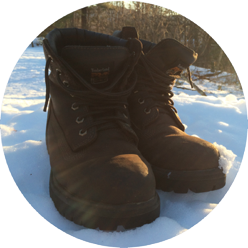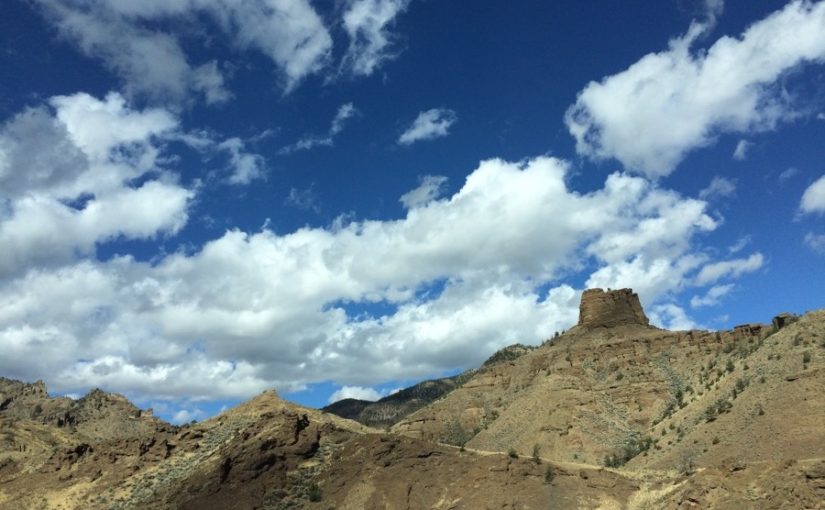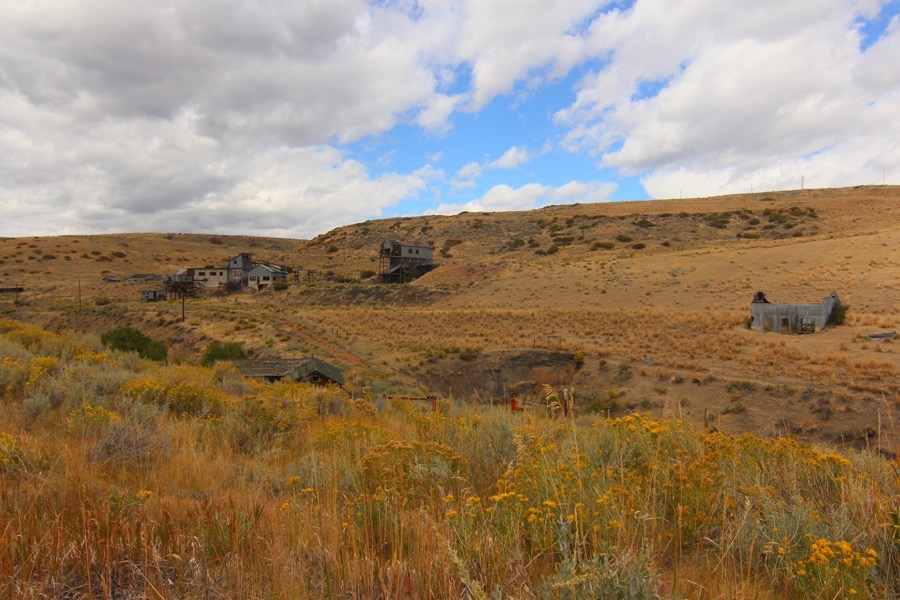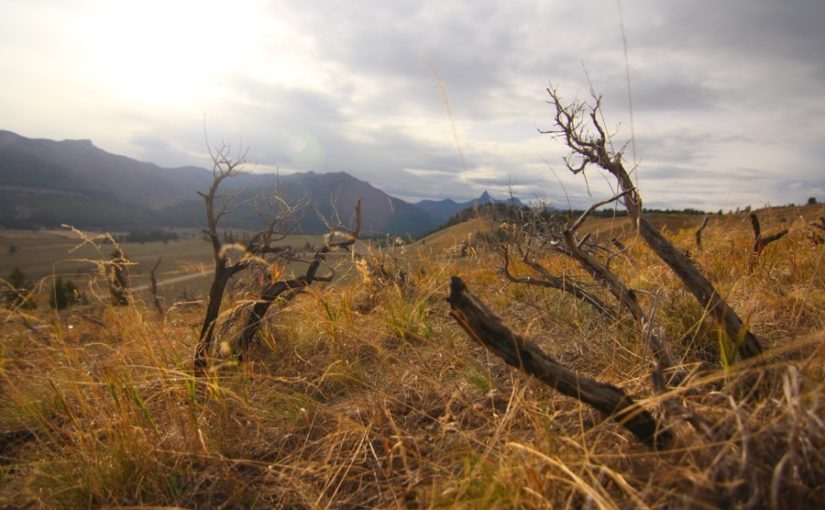Sunday, September 18
I collected our coffee from the KOA office and we went back into town. Dad popped into a mineral shop, looking for a few of his favorite specimen types. I enjoyed the fossils and mineral maps, as well as a display of a collection of nearly every Remington rifle and shotgun manufactured until the 1970s mounted high on both walls. A sign read, “Remington questions answered after $100 mineral purchase.” Another shop offered a great antique collection and a room full of historic arms worthy of a roadside museum. I bought Dad a little present for his birthday coming up on Tuesday.
We drove off toward Cody, Wyoming. After a short way across some hills, the landscape again underwent a dramatic change, switching to a desert theme. We stopped at what looked like an old mining town. We weren’t wrong, but we had also come across some sad history. A sign by the highway told us the story of the Smith Mine Disaster. In 1943 an underground explosion killed dozens of miners. Three escaped and a rescue effort with assistance from all over the region was mustered, but no one else was recovered alive. Those who had survived the explosion were poisoned by the methane gas that had caused it.
Miners are among divers, astronauts, and submariners in that it’s some technical system that keeps them alive. When that fails, one wonders about the experience of looking upon the certainty of death from within a mask or capsule as opposed to on a bed in an old body. We’re told two of the miners left us with words that might give us some response, writing;
“Walter & Johnny. Good-bye. Wives and daughters. We died an easy death. Love from us both. Be good.”
The mine’s little surrounding town is since abandoned and falling apart. It’s a tragic shipwreck poking up from among hills in a grassland.



